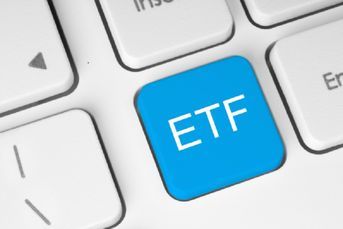How to make ETF transparency work for you and your clients
What are the investor benefits to transparency? Do most investors really care if they can actually see and examine their ETF holdings every day?
One of the most-touted benefits of ETFs is that they are required to disclose their holdings every day, something open-ended mutual funds don’t have to do. This transparency of ETFs is considered one of the product’s strongest attributes, right up there with low costs and tax efficiency. But what are the investor benefits to transparency? Do most investors really care if they can actually see and examine their ETF holdings each day?
“Transparency” is a powerful word. It’s always good, right? It suggests nothing is being hidden and that investors have access to all the key information they need. While I understand and appreciate the argument of portfolio managers who run actively managed mutual funds to not disclose their portfolio’s positions each day (can you imagine how difficult it would be for successful investors to maintain their advantage if they had to disclose holdings each day), the benefit of daily transparency for ETFs is that they become more dependable building blocks for an investment portfolio. That’s a big thing.
(More: Are ETFs really cheaper than mutual funds?)
Here’s how to make ETF transparency work for you.
The power of arbitrage
In short, given that holdings are revealed each day, ETF prices are able to be arbitraged relative to the fund’s underlying net asset values (NAVs). For example, if the price of the ETF is above the NAV, an arbitrager will sell the ETF and buy the basket of underlying holdings, essentially pocketing a risk-free return. Meanwhile, if the price of the ETF is below the NAV, an arbitrager will buy the ETF and sell the basket of underlying holdings, also essentially pocketing a risk-free return. Arbitrage is powerful, and it works.
Because of this arbitrage mechanism, prices will then track the NAVs closely. The difference between an ETF’s price and its NAV is considered “tracking error.” The lower the tracking error the better, and for ETFs, it’s usually pretty tight. In turn, since tracking errors are low, and since advisers can know the fund’s underlying objective and holdings, they can feel confident that an ETF is a reliable, consistent building block for a portfolio.
(More: New ETF lets active managers keep secret sauce)
This said, I do recognize that some ETFs, including many of the new and upcoming actively managed ones, have more erratic tracking errors. Nonetheless, for most of the ETF landscape, low tracking errors are the rule and not the exception.
Building Blocks
Having analyzed and invested in mutual funds and ETFs for nearly two decades, and having built portfolios using each, I truly believe both are solid investment vehicles. That said, when building a risk-managed portfolio, it becomes imperative to know what you are buying. And I believe that the transparency ETFs provide is indeed one of their key features, giving the product category a big leg up on mutual funds.
(More: Advisers need to crack fund managers’ narrative)
Mutual funds, especially if they’re extremely active, can move quite a bit in a short amount of time, not only in terms of risk characteristics such as relative volatility or style drift (i.e., how much a fund may differ from its stated or historical style of investing) but also asset allocation.
In the end, I don’t need to see the underlying portfolio holdings for every ETF in my portfolios each day. I’m busy enough. But since I know that ETFs’ holdings are listed, and I know arbitragers are out there trolling to pick up these nickels and dimes that may appear only for fraction of a second, I am confident that the ETF I’m buying for investors is doing exactly what I thought it would do when I put it in a portfolio.
Rusty Vanneman is chief investment officer of CLS Investments.
Learn more about reprints and licensing for this article.





